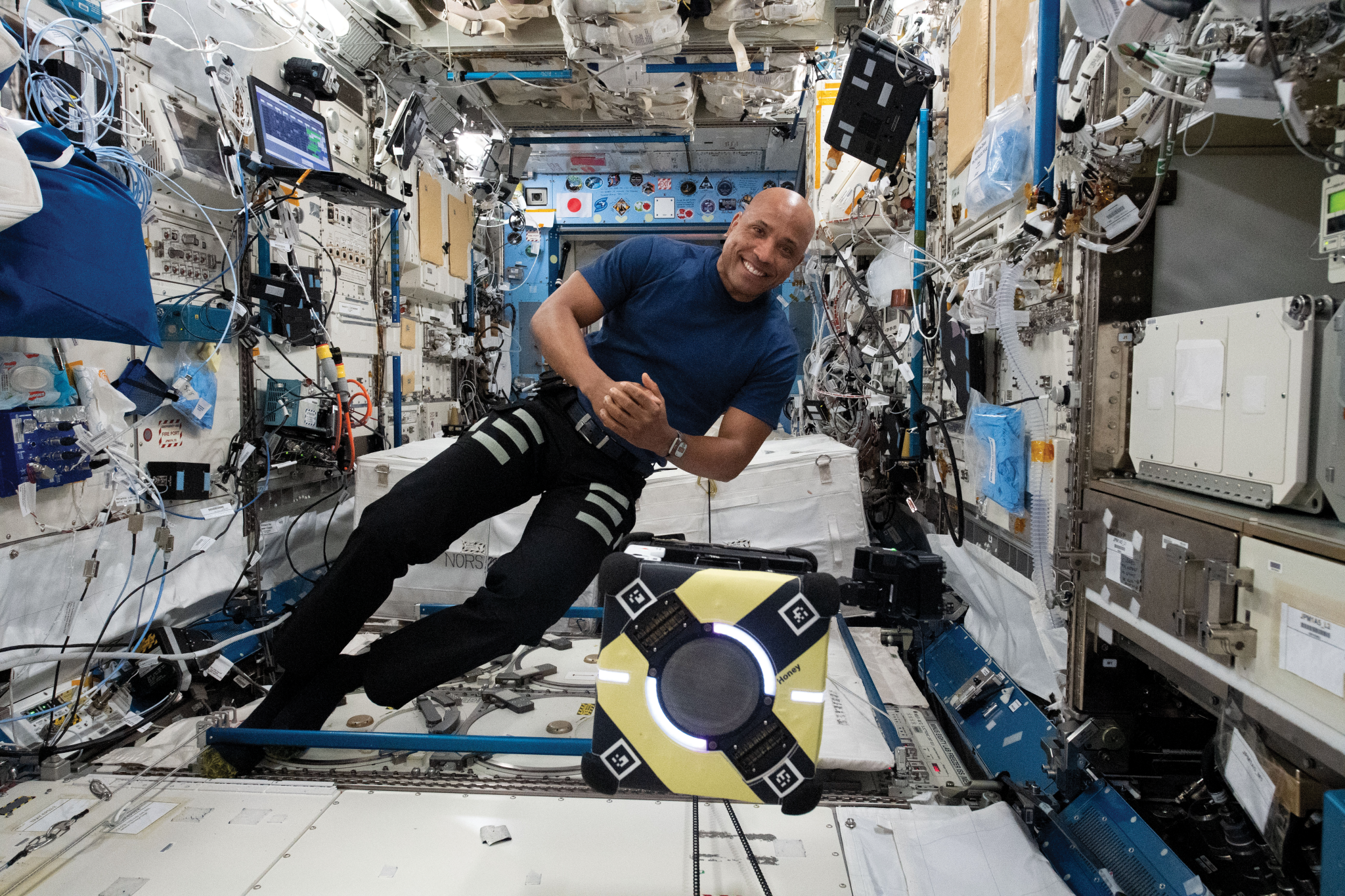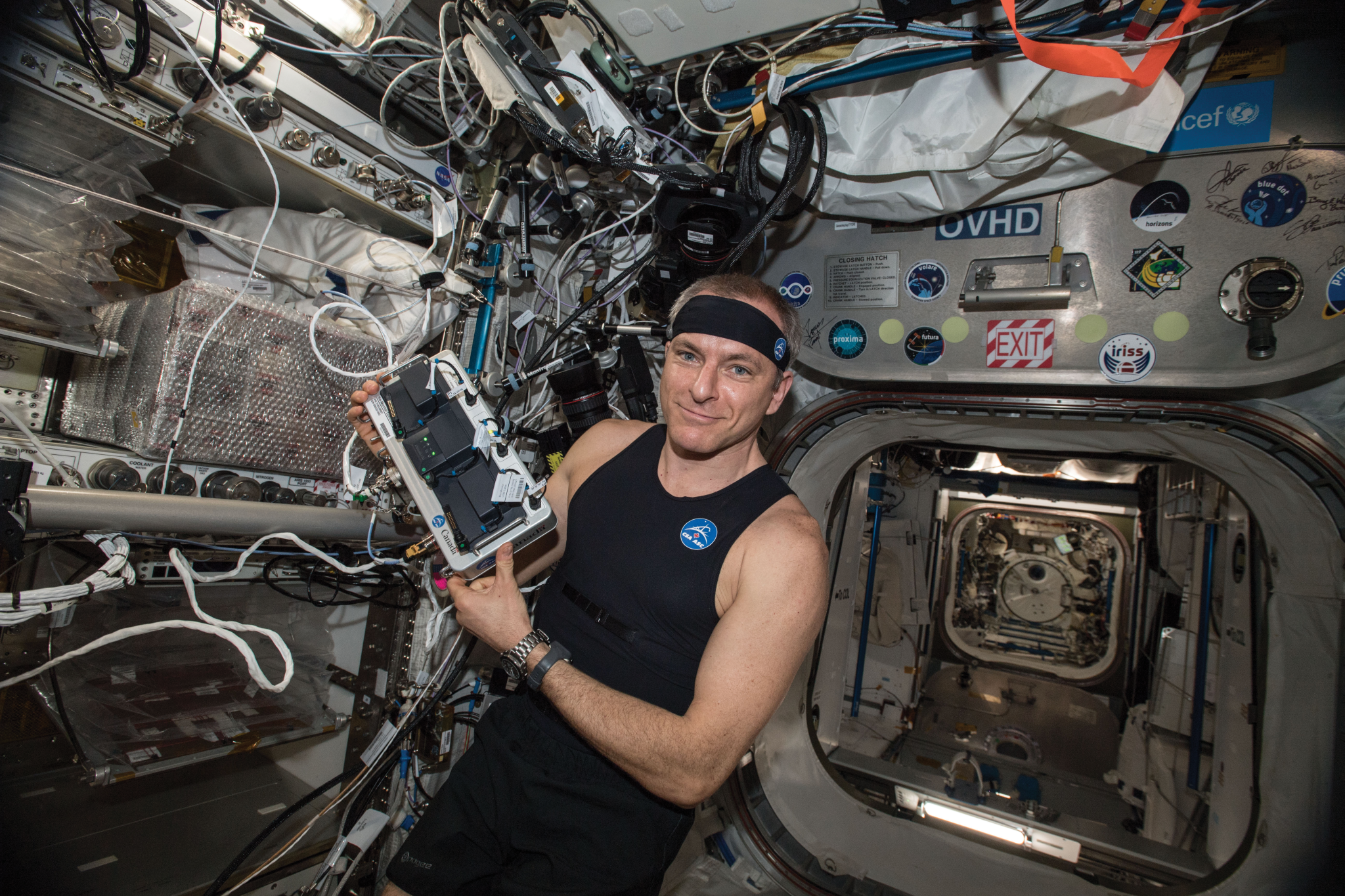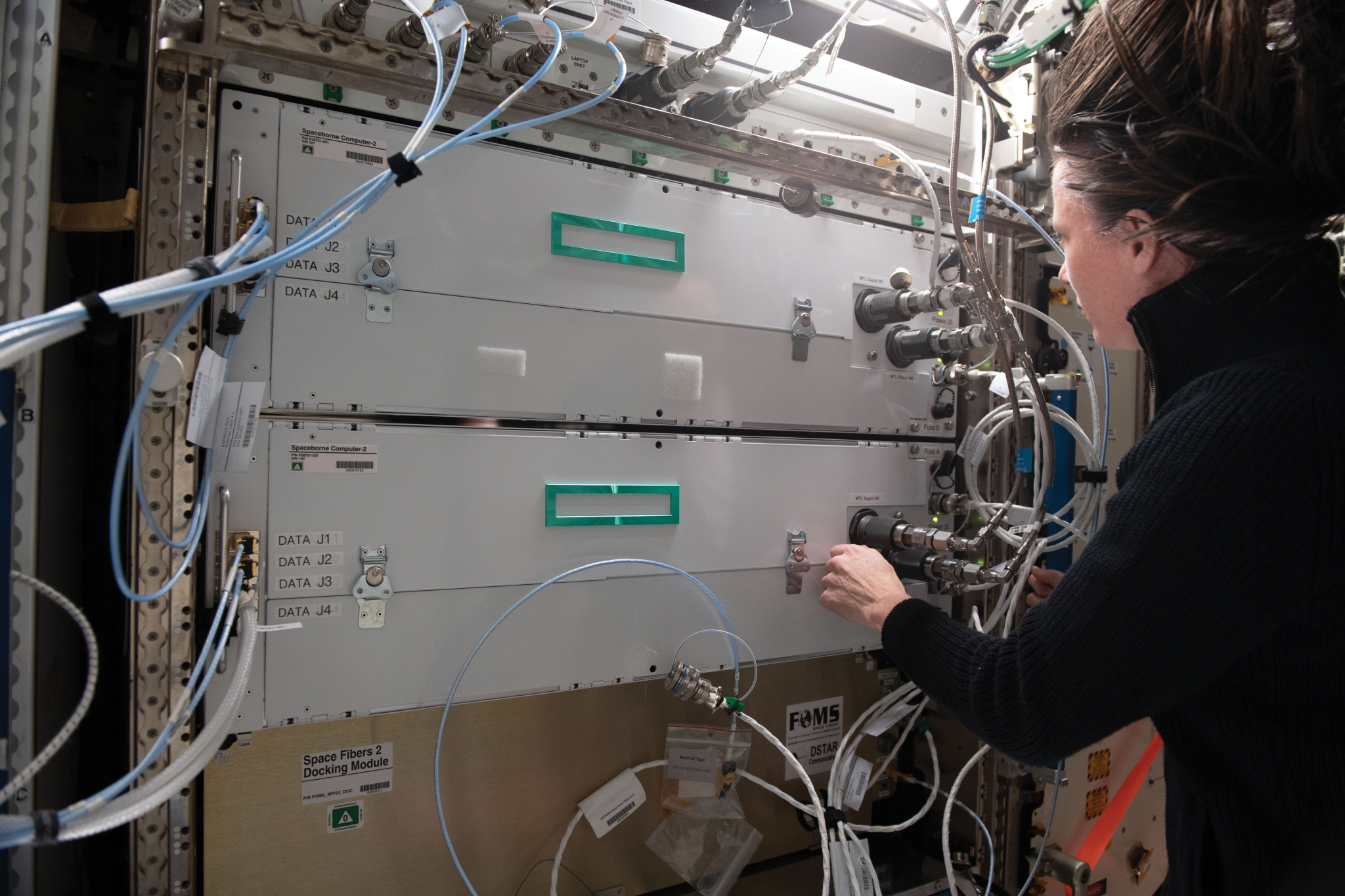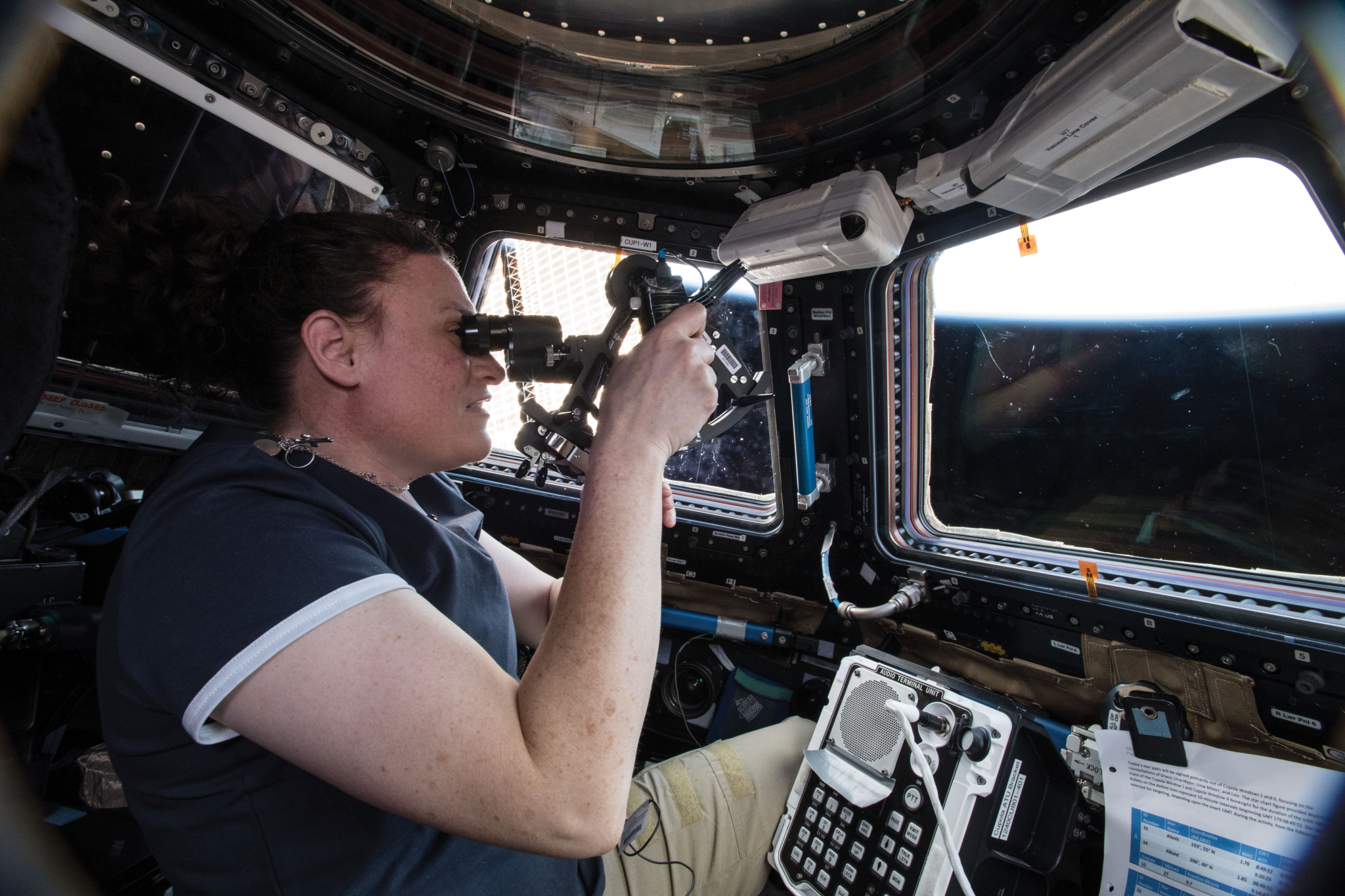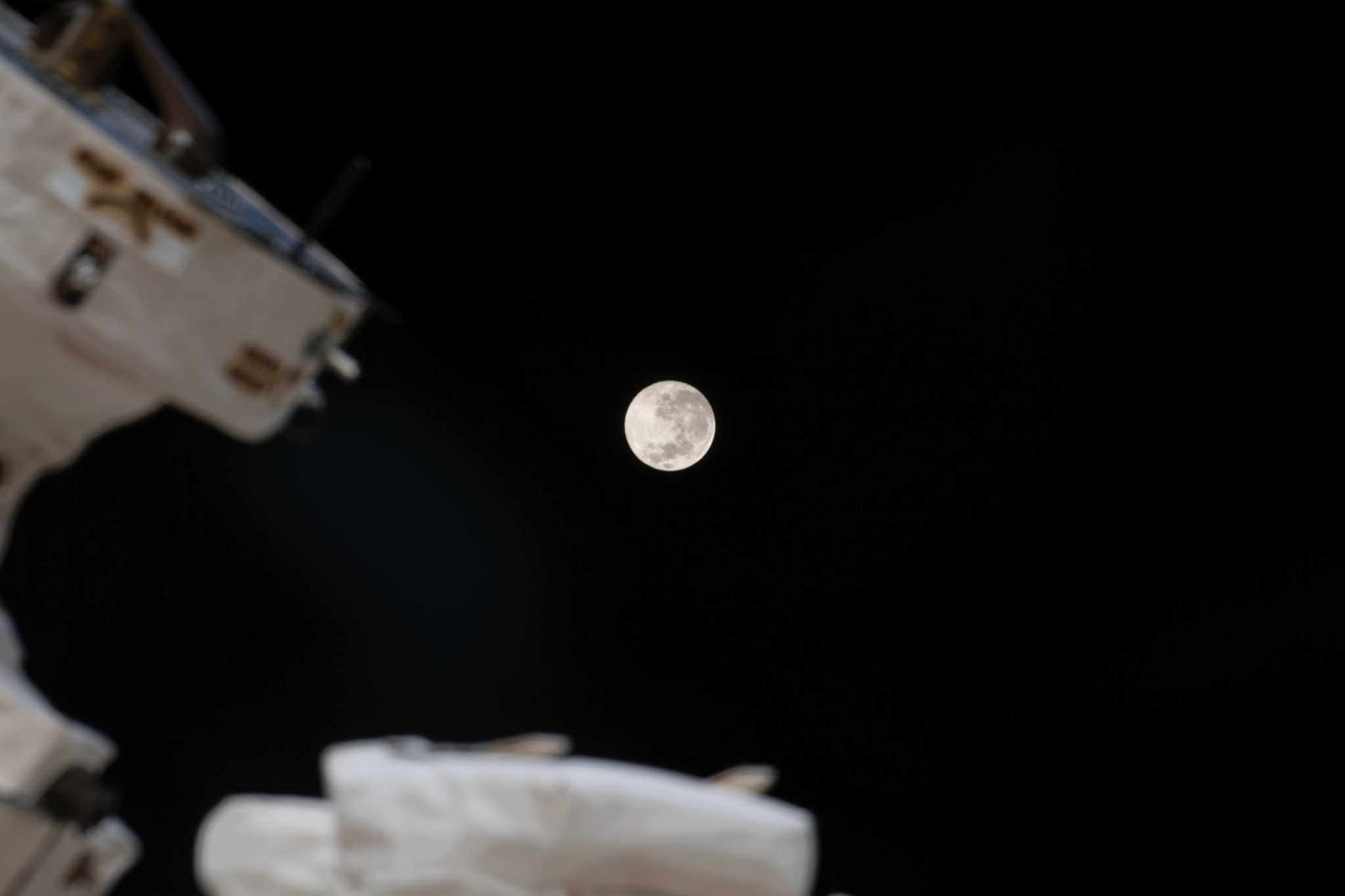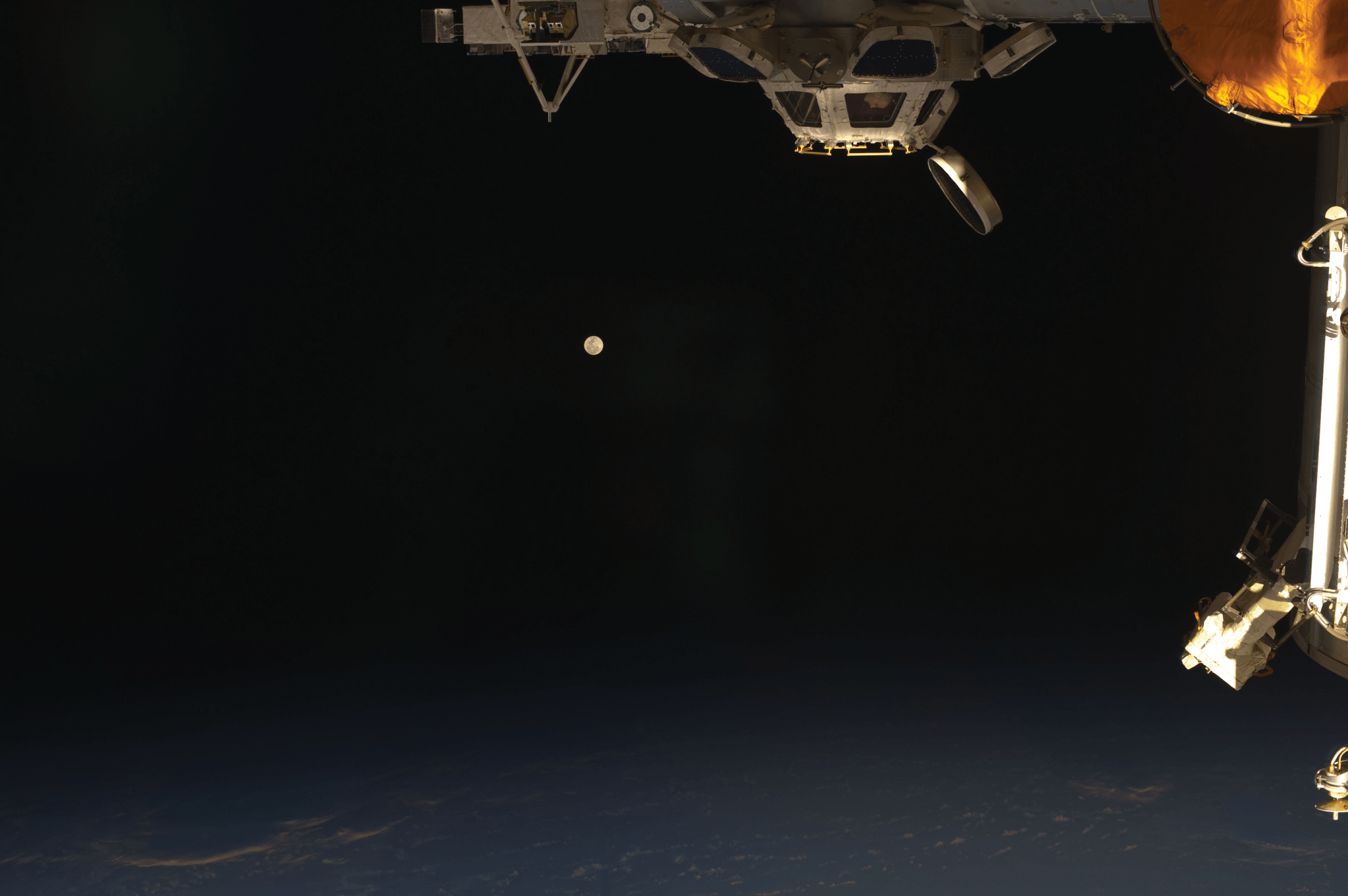Robots, computers, health monitors, life support systems among the technologies advancing in space and on the ground
NASA astronaut Victor Glover spent six months aboard the International Space Station in 2020 and 2021. While there, he worked on technology demonstrations that could play a big role in future lunar exploration. As a member of the Artemis team, NASA’s group of astronauts selected for missions to the Moon, Glover could directly benefit from those tests.
“I enjoyed looking at the design of experiments from an engineering standpoint,” Glover says. “There is always the chance to do something more efficiently or use a tool differently, some little puzzle to be solved every day. I really enjoyed knowing that, as crew members, we help advance technology to take us farther into space and improve life on Earth.”
The space station offers a unique platform for trying out new technology in space. Expertise and hands-on experience gained by astronauts and cosmonauts working and living in space long-term provide an added benefit for future missions beyond low Earth-orbit.
One investigation on which Glover worked, Astrobatics, uses the space station’s Astrobee robots to demonstrate robotic propulsion via hopping or self-toss maneuvers.
Robotics have a wide range of applications inside and outside a spacecraft. Currently, these automated helpers use fan-based propulsion, ducted fans, or zero-g climbing, which involves grasping handrails with robotic manipulators. Hopping requires less maneuvering, can be faster, and allows a robot to avoid areas that cannot be traversed using microgravity climbing, such as those without sufficient holds or with obstacles.
“People all over the world worked on Astrobatics,” Glover says. “We all approached it as, ‘We are going to learn something.’ The Astrobees are great. They are modular, so we can put different systems and parts on them. That technology and that team are a pleasure to work with.”
Human astronauts have somewhat different needs from their robotic assistants, and researchers have tested a number of technologies to monitor the health of crew members and keep them safe on long spaceflights. Canadian Space Agency (CSA) astronaut David Saint-Jacques was the first to test the CSA’s Bio-Monitor, a system using wearable sensors to monitor crew health without interfering with daily activities or taking up a lot of time. The technology includes a smart shirt and dedicated tablet application.
Bio-Monitor records the wearer’s physical activity, heart rate, and respiration; takes regular blood pressure readings; and estimates arterial stiffness. Researchers can use these data to assess an individual’s metabolism and vascular health, and perhaps identify and detect biomarkers that may predict early signs of cardiovascular aging.
“The Bio Monitor is a one-stop shop for tracking what is going on with our bodies,” says Saint-Jacques. “Similar technology could eventually be used to monitor athletes, workers in dangerous environments, or patients in remote localities on Earth.”
A primary hazard of spaceflight – for people and equipment – is radiation. The AstroRad Vest investigation tests a vest designed to protect astronauts from radiation, gathering feedback from astronauts about how easy the garment is to put on, its fit and feel, and the range of motion it allows. AstroRad complements MARE, a partnership involving NASA, the Israel Space Agency, and the German Aerospace Center (DLR), to characterize the radiation environment astronauts are expected to experience on Artemis-1.
A variety of other technologies add to radiation protection, including a study called A-HoSS that evaluates the performance of a radiation detection system in space. Another space station study converts radiation measurements into risk levels for specific places and times aboard the space station.
As important as addressing hazards to humans in space is providing them with essentials such as air and water. Life support systems, including ways to provide adequate water, are another critical part of space travel being tested and tried on the space station.
AquaMembrane, an ESA (European Space Agency) investigation, tests replacing the station’s current water recovery system with an apparatus called the Aquaporin Inside Membrane (AIM). More-efficient water reclamation systems could reduce launch mass and associated costs for space travel.
UWMS demonstrates new and improved toilet technology on the station. The central design concept can be easily integrated into different spacecraft, such as for future missions to the Moon and Mars. Another UWMS unit will be installed in Orion for the Artemis II flight test that will send astronauts on a mission beyond the Moon and back. A smaller, more-comfortable, and more-reliable waste-disposal method frees up time for the crew to focus on other activities.
Melding waste disposal and providing water, the Exploration ECLSS: Brine Processor System demonstrates a way to recover more water from urine.
A urine processor assembly that is currently part of the station’s water recovery system recovers about 93.5% of water from crew urine and condensate in the cabin. Crews on long-duration exploration missions will need to recover closer to 98% of the water they bring along on their journeys. Current urine water recovery systems use distillation, which produces brine. The Brine Processor extracts the remaining water from the brine, bringing overall water recovery closer to the 98% requirement.
In 2018, crew members also installed ESA’s Life Support Rack to test technology for recycling carbon dioxide into oxygen. It features a slightly different design than NASA’s existing system, which is based on ongoing tech demonstrations that react collected carbon dioxide with hydrogen to make water. Prior to development of these systems, the station relied on water shipped from Earth to generate breathing oxygen. The technology therefore represents a huge step toward developing sustainable life-support systems needed for longer missions.
With robot performance tested and people protected, a next step is ensuring that both can do their jobs as quickly and efficiently as possible. The ISS National Laboratory and Hewlett Packard are testing a high-performance commercial off-the-shelf system to move computing power into space.
“Many experiments that run on the space station primarily collect data and send it back to Earth,” says Mark Fernandez of Hewlett Packard, principal investigator for Spaceborne Computer-2. “We want to move computing to where data are generated or collected, whether that is in space, or on your oil rig or aircraft, to turn a sample into insight as fast as possible. You process at the edge and get the go or no-go or safe-unsafe answers you need.”
This study builds on previous space station research, ensuring this type of computer system can operate without extensive protections against radiation.
“The purpose of exploration is not data collection, it is insight, and I want to get brilliant minds throughout the world working on the insight rather than crunching numbers,” Fernandez says. “This capability does not change anything that a scientist already does, it just moves it nearer where the data are generated. The depth of the potential is pretty deep – things like image and signal processing, health care, DNA analysis.”
Deep space missions do not all take place inside carefully closed-off habitats, of course. Sometimes astronauts must work outside spacecraft and habitats and their carefully planned life support systems – work that relies on spacesuits. SERFE conducts a new technology demonstration using water evaporation to remove heat from spacesuits, investigating the effect of contamination and corrosion on the thermal control system and examining how microgravity affects the system’s ability to regulate astronaut body temperature under various conditions, such as physical activity and changing temperatures.
The final step of a successful mission – coming home – relies on navigation systems and their back-ups. Sextant Navigation successfully demonstrated that a hand-held sextant could provide emergency navigation on future exploration missions. Much like Glover, NASA astronauts Serena Auñón-Chancellor and Anne McClain and ESA astronaut Alexander Gerst each brought their expertise to using the tool aboard the space station. They added additional reference points to account for the speed at which the space station moves, found comfortable ways to steady themselves while using the instrument, tested red-text versions of star charts on a tablet, and made other adjustments.
“As a test pilot, I know how important it is to test systems in the environment where they will be used,” Glover says. “Taking something up to the station and showing it can survive there helps us make things that last longer here. It is vital to have this capability.”
Explore more about how these exploration technologies are being benefiting humanity back on Earth
























